
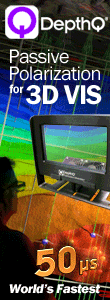

Stereoscopic Displays and Applications XXIX (2018)
Conference Proceedings
Proceedings of the Electronic Imaging Symposium
| This proceedings introduction is published as a full SD&A proceedings manuscript which can be cited as: A.J. Woods, N.S. Holliman, G.E. Favalora, T. Kawai, B. Sommer "Stereoscopic Displays and Applications XXIX - Introduction," in IS&T Electronic Imaging: Stereoscopic Displays and Applications XXIX, (IS&T, Springfield, VA, 2018). DOI: TBA |
Stereoscopic Displays and Applications XXIX - Introduction
Andrew J. Woods1, Nicolas S. Holliman2, Gregg E. Favalora3, Takashi Kawai4, Björn Sommer5
1Curtin University, Australia; 2Newcastle University, United Kingdom; 3Draper, USA; 4Waseda University, Japan; 5University of Konstanz, Germany.
Abstract
This document provides an overview of the 2018 Stereoscopic Displays and Applications conference (the 29th in the series) and an introduction to the conference proceedings.
Introduction
The 29th annual Stereoscopic Displays and Applications (SD&A) conference was held from 29 - 31 January 2018 at the Hyatt Regency San Francisco Airport hotel in Burlingame, California. The SD&A conference remains the premier venue for the dissemination of research on topics relating to stereoscopic 3D displays and their applications. This introduction gives an overview of the conference as a reminder for those who attended and an insight into what happened for those who were unable to attend.
SD&A attracts key players in the field: stereoscopic experts from industry and academia presented the two keynotes, participated on the discussion panel, and spoke in the technical presentations. The conference had an excellent technical program covering a wide range of stereoscopic topics.
This year, the conference received 33 submissions. Of these, 29 were accepted for oral presentation (88%), with an additional 4 interactive presentations accepted as posters. Three of the conference sessions were jointly held with the co-located conference The Engineering Reality of Virtual Reality (ERVR) 2018 and one of these also jointly with The Photography, Mobile and Immersive Imaging (PMII) 2018 conference.
The conference program listing at www.stereoscopic.org/2018 indicates which presentations were presentation only and which have a supporting manuscript and where to find it.
Manuscripts from SD&A 2018 will be published in four locations:
- Most manuscripts from the SD&A conference sessions will be published at the IS&T Digital Library in the SD&A conference proceedings with the other 2018 Electronic Imaging Symposium proceedings at: https://library.imaging.org/ei/volumes
- Some papers from the joint sessions held with the ERVR conference will be published in the ERVR conference proceedings – also at the IS&T Digital Library: https://library.imaging.org/ei/volumes
- Papers from the Immersive Imaging session held jointly with the PMII and ERVR conferences will be published in the PMII conference proceedings at the IS&T Digital Library: https://library.imaging.org/ei/volumes
- Manuscripts from the special session “Stereoscopic Applications: VR to Immersive Analytics in Bioinformatics” will be published in a special issue of the Journal of Integrative Bioinformatics available in mid 2018: https://www.degruyter.com/view/j/jib
This is a bit more complicated that past years but worry not – just visit the SD&A conference 2018 program page at www.stereoscopic.org/2018/program.html and this will contain direct links to all manuscripts presented at the conference.
All manuscripts from the SD&A 2018 conference are open access – so happy reading!
First Day
The first day had two technical sessions. Topics covered included Stereoscopic Developments and a session on Autostereoscopic Lightfield Displays. The day also included the Electronic Imaging (EI) Symposium Opening Plenary by Dr Greg Corrado (Google, CA), as well as the first SD&A Keynote session of the conference by Professor Andrew Glennerster (Reading University, UK).
Maintaining the conference's tradition of a busy Monday, the day also included the EI Symposium reception, the annual SD&A 3D Theater Session, and the ritual SD&A conference banquet.
The Monday EI Plenary by Dr Greg Corrado, had the title "Overview of Modern Machine Learning and Deep Neural Networks - Impact on Imaging and the Field of Computer Vision" on the topic of recent developments in machine learning. In a great talk, Dr Carrado gave a history of the rapid rise in use of deep neural networks. This both covered the wide range of possible applications of deep learning, particularly using supervised techniques, and highlighted areas where deep learning might be less effective. As in previous years, the EI Plenary was given in the large conference room that was the "home base" for the SD&A Conference. The video is this plenary presentation is available here: http://bit.ly/EI2018_CorradoG
The first SD&A Keynote Presentation was given by Andrew Glennerster, Professor of Psychology (Reading University, UK) and was entitled, "What use is 'time-expired' disparity and optic flow information to a moving observer”. He described psychophysical tasks from his VR lab where participants point to unseen targets after navigating to different locations. The results demonstrated there are large systematic biases in performance at these tasks that rule out the notion that humans build a stable 3D reconstruction of the scene that is independent of the task at hand. These results were a fascinating example of how what we think we see and what our brain actually uses to see are very different things. Much discussion ensued. A video of this presentation is available online, please visit the SD&A conference website: www.stereoscopic.org
The 3D Theater Session is a regular highlight of the conference that showcases 3D content from around the world. This year, the following pieces (or segments thereof) were screened:
Competition Category:
- "An Alternate Geometry of Nature" – John Hart (USA)
- "Anitya - Impermanence" – Ikuo Nakamura (USA)
- "Ba Dai Tou" – Neoscape (USA)
- "Canine Soldiers: the Militarization of Love" – Nancy Schiesari (USA)
- "Crooked Billet" – Richard Connew (UK)
- "Deadline (The Magician)" – Andi Wenzel (Germany)
- "Demented Dancing Doohickies" – Steve Segal (USA)
- "Formation of a Massive Dark Matter Halo in the Bolshoi-Planck Cosmological Simulation" – Simulation: Anatoly Klypin & Joel Primack; Analysis & Visualization: Peter Behroozi, Christoph Lee; Narration: Joel Primack (USA)
- "Formosa 3D" – Director: Charlie Chu; Production Company: Studio Gene Young 3D Image Co., Ltd. (Taiwan)
- "Gentle Storm" – Ikuo Nakamura (USA)
- "Man and Wife" – Hyunwoo Kim (South Korea)
- "On the Rails: Episode 1 - Montauk" – E. James Smith (USA)
- "Sombre Flame" – Aleksey Osipenkov (Russia)
- "Sonora Paramotoring" – John Hart and Todd Martin (USA)
- "Stereo: A Love Song to 3D" – Creator and star: Robert Bloomberg; Motion graphics and co-animator: Pad McLaughlin (USA)
- "Tuschinski Dream" – Director: Jérôme Diamant-Berger; Producer: Olga Prudhomme-Farges; Stereographer: Fabien Remblier; Musicoser: Béatrice Thiriet; Editing: Guillaume Diamant-Berger (France)
Demonstration Category:
- "Angry Boy, Making of" – Alaric Hamacher (South Korea)
- "Cars 3" – Pixar Animation Studios (USA)
- "Cease Fire (from 1953)" – Kino Lorber; restored by 3-D Film Archive (USA)
- "Fire Water Works" – Peter Rose (USA)
- "Lou" – Pixar Animation Studios (USA)
- "Moana" – Walt Disney Studios (USA)
- "New Jersey Transit" – Peter Rose (USA)
- "Terminator 2 (from 1991)" – Lightstorm Entertainment (USA)
- "Those Redheads from Seattle (from 1953)" – Kino Lorber; restored by 3-D Film Archive (USA)
- "Zootopia" – Walt Disney Studios (USA)
We wish to thank all of the contributors who kindly allowed their 3D content to be screened at this event. Some 80 people enjoyed this 90-minute session. All entries were screened in high-quality polarized 3D on the conference’s large projection screen.
The producers of the 2018 SD&A 3D Theater were John Stern (Intuitive Surgical Inc., retired), Chris Ward (Lightspeed Design), and Andrew Woods (Curtin University). Management and playback of 3D content was expertly handled by Dan Lawrence (Lightspeed Design). The 3D content partners for the session were the LA 3-D Movie Festival (USA) and the 3-D Film Archive (USA).
The Best of Show awards were judged by:
- Emeritus Professor Dan Sandin of the Electronic Visualization Lab at Univ. Illinois at Chicago, who worked on the original vector graphics for Star Wars: A New Hope, and
- Eric Kurland of 3-D Space, who has worked on 3D productions for Fox and OK GO.
The judges chose the following 3D content winners:
Best-of-Show Live Action category:
"Formosa 3D" – Director: Charlie Chu; Production Company: Studio Gene Young 3D Image Co., Ltd. (Taiwan)
Synopsis: From the vibrant sea world to lush terraced fields, to mountain landscapes, to tropical fish and butterflies; from the oil-paper umbrella master, the drum-maker, the feather duster craftsmen, and the tea-picking workers; "Formosa 3D" records 10 exquisite scenes, and 100 traditional craftsmen to remind us of the beauty of Taiwan. See Figure 1 and for more information visit: www.formosa3D.com

Figure 1. Formosa 3D by Charlie Chu, Taiwan, Best of Show 3D live action.
Best-of-Show Animation category:
"Stereo: A Love Song to 3D" – Creator and star: Robert Bloomberg; Motion graphics and co-animator: Pad McLaughlin (USA)
Synopsis: An ode to the classic 3D movies of my youth.
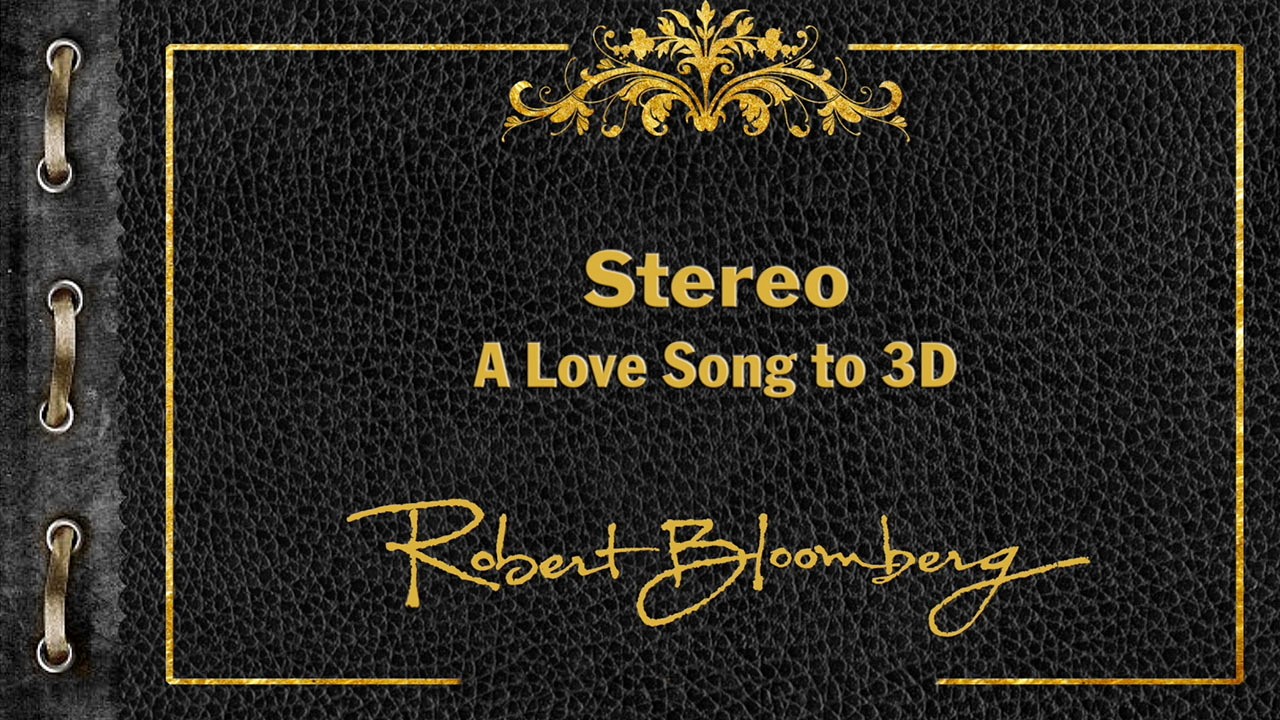
Figure 2. Stereo: A Love Song to 3D, Robert Bloomberg, Pad McLaughlin, Best in Show Animation.
The evening concluded with the SD&A conference dinner at Max's Restaurant and Bar in Burlingame - a short walk from the conference hotel. The conference dinner is a reliably relaxed opportunity to socialize with one's peers. The 2018 dinner provided many opportunities for sharing of 360 3D production tales and sharing 3D equipment around the tables.
Second Day
The second day of the conference had three technical sessions: two on Stereoscopic Applications: VR to Immersive Analytics in Bioinformatics, and a second Autostereoscopic Displays session. The day also included the second Symposium Plenary, the popular annual SD&A Discussion Forum, and the annual demonstration session.
The day started with the first part of the double session “From Virtual Reality to Immersive Analytics in Bioinformatics” which explored new ways to visualize, present, explore and analyze biological data with new stereoscopic technologies.
Hua Wong started with his presentation of “Mesoscopic rigid body modeling of the ExtraCellular Matrix's self assembly”, followed by the topic “Semantics for an integrative and immersive pipeline combining visualisation and analysis of molecular data” by Mikael Trellet. With “3D-stereoscopic modeling and visualization of a Chlamydomonas reinhardtii cell”, Björn Sommer presented in stereoscopic 3D the story and development behind the animation “Chlamydomonas reinhardtii 3D – From Biological Cells to Biofuels” which was premiered in 3D at the SD&A in 2016. “Immersive analysis and visualization of redox signaling pathways integrating experiments and computational modelling” was presented by Marc Baaden which was based on his long-running UnityMol project which can be used to explore molecules in 3D space.
The second all-of-symposium EI Plenary was presented by Professor Avideh Zahkor who holds the Qualcomm Chair at U.C. Berkeley. Dr. Zakhor is CEO and founder of Indoor Reality, a Silicon Valley start-up with products in 3D reality capture, and visual and metric documentation of building interiors. Zakhor has also been faculty member at U.C. Berkeley since 1988. Her presentation on Fast Automated 3D Modeling of Buildings and Other GPS Denied Environments showed how it is possible to capture indoor environments rapidly and accurately without GPS signals. She demonstrated how this was even possible using a smart phone with an enhanced camera attachment. A video of this presentation is available here: http://bit.ly/EI2018_ZahkorA
The discussion forum, led by conference co-chair Andrew Woods, explored the topic of "360° Imaging Should Be 3D - But Why And How?" with participants Dan Sandin (The University of Illinois at Chicago), Greg Dawe (University of California San Diego) and Eric Kurland (3-D Space). The panel’s discussion covered topics including aesthetic and experiential aspects of including stereoscopic functionality in 360° imaging, technical aspects of capturing and displaying stereoscopic 360° content, and a discussion of current equipment available for capturing stereoscopic 360° content. The audience also provided a good selection of questions and insights.
The second Bioinformatics-related session ran with two talks: Michael Krone evaluated the Hololens with respect to its capabilities towards immersive molecular visualization in his talk “Interactive molecular graphics for augmented reality using HoloLens”. Finally, Andrew Woods concluded the special double session with his team’s brand new project: “Molecular Dynamics Visualization (MDV): Stereoscopic 3D display of biomolecular structure and interactions using the Unity game engine”. Here, an impressive stereoscopic recording of this new software project was shown on the conference big screen, presenting its various capabilities and options. Manuscripts from the Bioinformatics special session will be published in a special issue of the Journal of Integrative Bioinformatics (de Gruyter, Berlin) in the midst of 2018.
On Tuesday evening, the demonstration session drew a huge number of enthusiastic conference attendees. This year was clearly the year of the Google VR cardboards and HMDs, as there were multiple demonstrations making use of this key stereoscopic technology (see Figure 3). The whole range was covered, visually demanding fully-immersive visualizations using the Oculus Rift (e.g. UnityMol) as well as rather abstract and varied visualizations using VR cardboards in combination with smartphones (e.g., mobile data visualization).
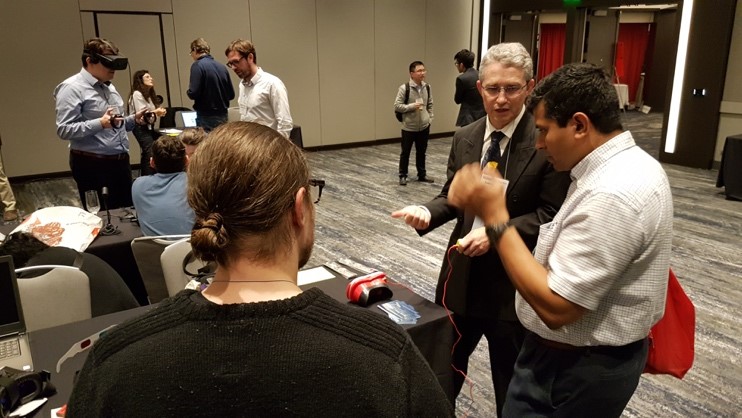
Figure 3. The demo session is always accompanied by a number of interesting discussions. Moreover, this photo contains three Google VR cardboards / HMDs – find them all! In the mid-frame is Andrew Woods in discussion with Guarav Sharma.
A particular highlight of the demonstration session was certainly the extensive display from Ilicia Benoit and Eric Kurland who showcased a wide selection of historical stereoscopic 3D games (see Figure 4).
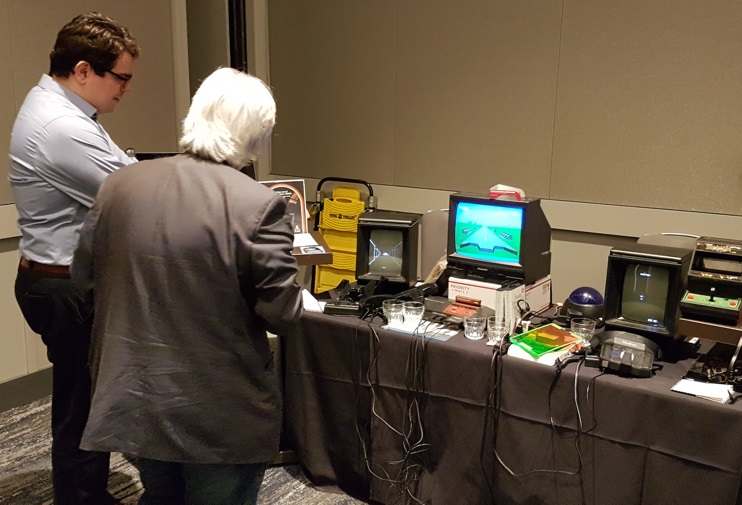
Figure 4. Discussions at the electronic 3D games stand showcased by Ilicia Benoit and Eric Kurland.
As all participants of the “From Immersive Analytics to Bioinformatics” session presented their work in the demonstration session, one focus of this year was on Biology-related topics. (e.g. see Figure 5).
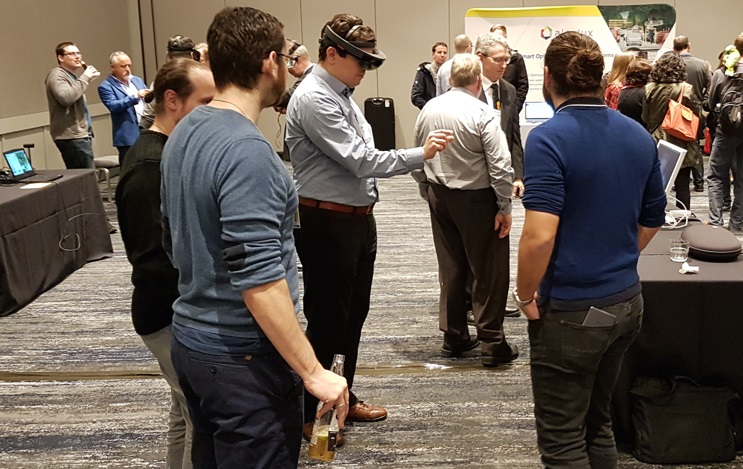
Figure 5. Michael Krone presenting molecular structures on the Hololens.
The following stereoscopic related demonstrations were presented at the session:
- “Historical Stereoscopic Gaming”, a hands-on display of stereoscopic electronic games and related ephemera (Ilicia Benoit and Eric Kurland – see Figure 4)
- Use of a VR headset to assess weaknesses in human stereoscopic vision and also provide treatment exercises (Benjamin Backus, Vivid Vision)
- UnityMol – a software to explore molecular structures with the Oculus Rift (Marc Baaden, Alexandre Maes, Xavier Martines, Stuttgart University)
- CADwalk – life-size MR-AR-VR design experience video presentation (Gerhard Kimenkowski)
- Exploration of molecular data with the Hololens (Michael Krone, see Figure 5)
- Cardboard VR Exploration of Chlamydomonas r. 3D 360˚ as well as mobile sensor data visualization (Björn Sommer)
- Mesoscopic rigid modeling of the extracellular matrix (Hua Wong, Reims University)
- Molecular Dynamic Visualization (MDV) – stereoscopic visualization of molecular structures with Unity (Andrew Woods)
- The VR experience “Beacon Virtua” was displayed in a Google Cardboard viewer and on a laptop display as an example of multi-platform VR capability (Andrew Woods)
- Polar Screens presented an autostereoscopic display with head tracking that uses a directional backlight to support full-HD resolution to each eye. (Ted Judge and Jean-Etienne Gaudreau)
As with every year, there were also a number of demo presentations from other conferences which enriched the program for all attendees.
A selection of photographs from the demonstration session is available via the SD&A conference website www.stereoscopic.orgThird Day
The third day of the SD&A conference had the second SD&A keynote, the third EI plenary, and three technical sessions: Stereoscopic History, an Immersive Imaging joint session, and a wide ranging joint session on Visualization Facilities.
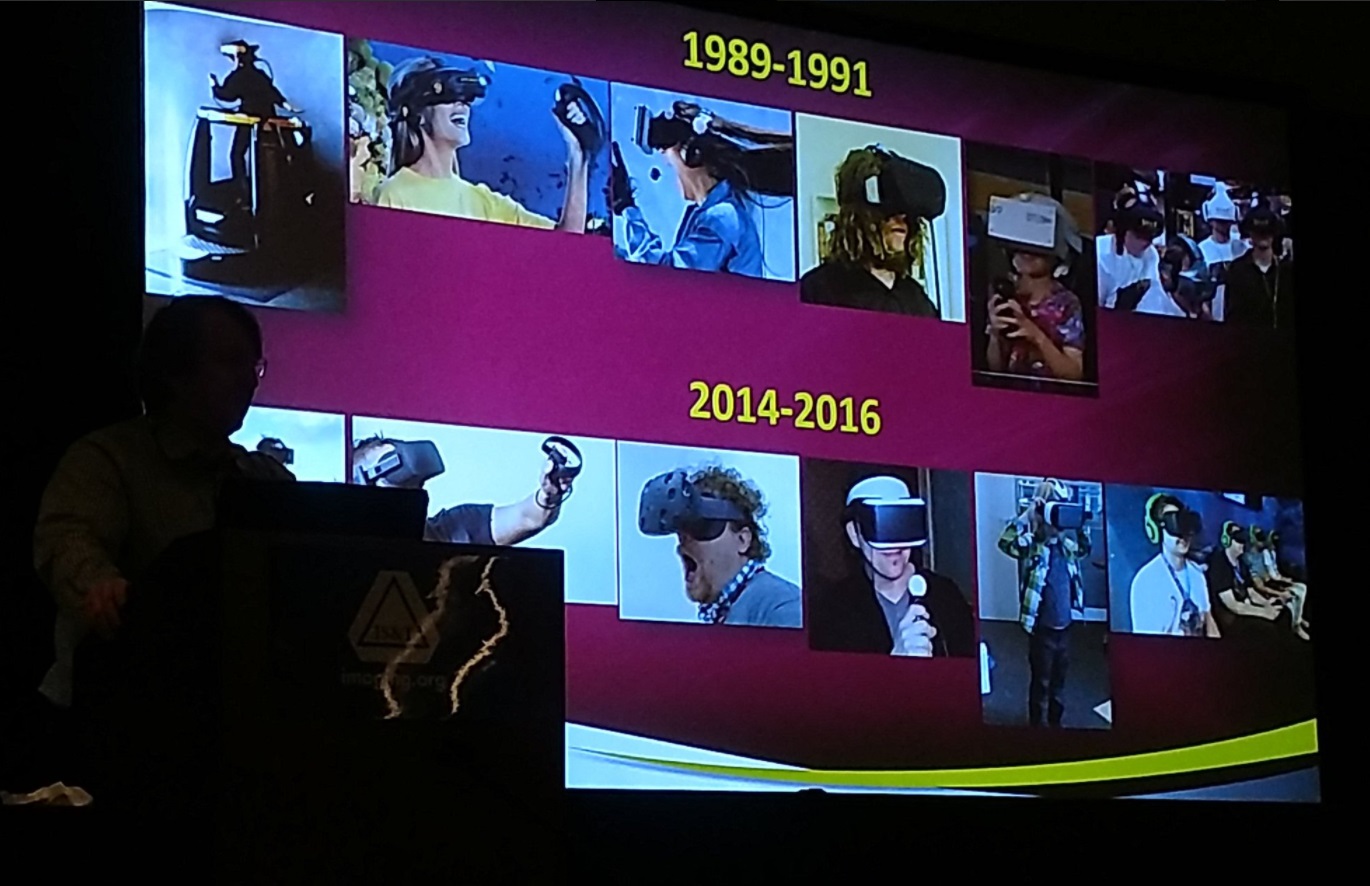
Figure 6. Dirk Reiners (University of Arkansas at Little Rock) highlighting the unchanging face of VR over 25 years.
The second Keynote speaker for SD&A was John O. Merritt whose presentation was titled “Over fifty years of working with stereoscopic 3D systems: anecdotes, insights, and advice
illustrated by many examples of stereoscopic imagery, both good and bad”. John’s keynote talk demonstrated the depth of experience he has gained working in his chosen field. He addressed questions including: “Stereoscopic 3D has been around for well over a century --- so, how could 3D systems still not be completely perfected and accepted by now?” and “Why does stereo 3D popularity wax and wane in cycles?”
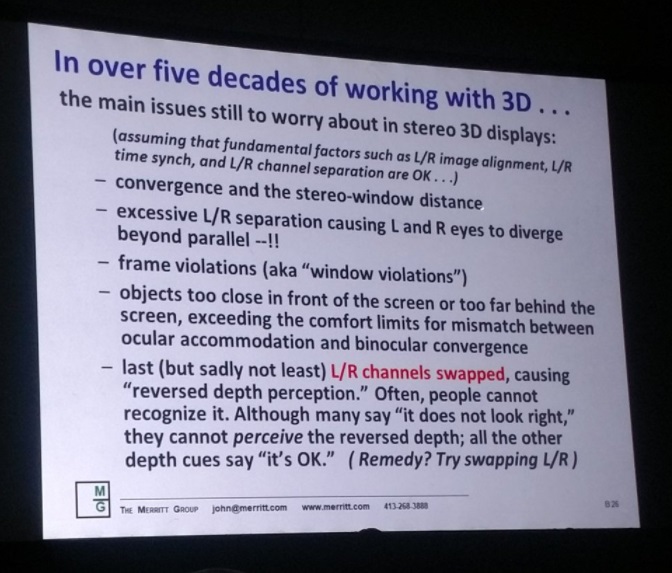
Figure 7. Fifty years of advice on stereoscopic imaging as summarized by IS&T Lifetime Achievement Award winner John O. Merritt of The Merritt Group.
Following the morning coffee break a keynote was presented by Shahram Izadi of perceptiveIO, jointly sponsored by the Photography, Mobile and Immersive Imaging, the Engineering Reality of Virtual Reality and the SD&A conferences. This keynote titled “Real-time capture of people and environments for immersive computing”. You might remember Shahram from the Microsoft Hololens video titled “Holoportation” showing a real-time reconstructed VR/AR environment: https://youtu.be/7d59O6cfaM0
The third and final all-of-symposium EI plenary presentation was a wide ranging and insightful presentation by Ronald T. Azuma on the technical challenges of Augmented Reality, titled “Ubiquitous, Consumer AR Systems to Supplant Smartphones”. Ronald highlighted the need for new, compelling AR experiences to establish AR as a new platform and widespread novel form of media. A video of this presentation is available online: http://bit.ly/EI2018_AzumaR
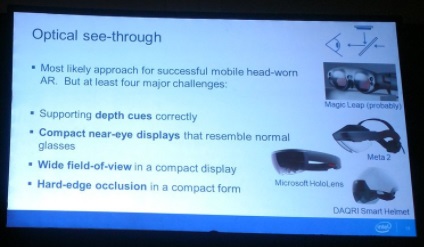
Figure 5. Ronald T. Azuma (Intel Labs, USA) summarized the main challenges that remain to be addressed to make AR that really works.
During the EI conference awards sessions two SD&A alumni were recognized with special IS&T awards. John Merritt was awarded the first IS&T Lifetime Achievement Award in Electronic Imaging for his outstanding service and significant contributions in the area of stereoscopic 3D display systems and applications. Assistant Professor Gordon Wetzstein was presented with the 2017 Electronic Imaging Scientist of the Year Award.
The third day concluded with the interactive paper / poster session. There was lots of energy in the hall with presenting authors at their posters kept busy with questions from the attendees. Deep learning was a topic in many posters this year.
Discussion
Most of the technical sessions in the SD&A conference hall were video recorded including the two SD&A keynotes. The content is available online via the SD&A conference website. Links are provided to videos from the 2018 conference program page when available: www.stereoscopic.org/2018/program.html
In addition to the prizes for the 3D Theater, a final prize was offered at the conference for the best use of stereoscopic presentation tools during the technical presentations - chosen by the SD&A conference chairs.
The winner for the best use of the stereoscopic projection tools during the SD&A conference presentations was:
“3D-stereoscopic modeling and visualization of a Chlamydomonas reinhardtii cell”, Niklas Biere3, Mehmood Ghaffar3, Daniel Jäger3, Anja Doebbe3, Nils Rothe3, Karsten Klein1,2, Ralf Hofestädt3, Falk Schreiber1,2, Olaf Kruse3, and Björn Sommer1,2; 1University of Konstanz, Germany, 2Monash University (Australia), and 3Bielefeld University (Germany)
Congratulations to all of our prize-winners.
Many individuals and companies contributed in various ways to the success of this year’s SD&A conference:
- We appreciate the support of this year’s stereoscopic projection sponsors: DepthQ Stereoscopic (USA), Christie Digital (USA). The ability to present high-quality large-screen stereoscopic images and video at the conference is vital to the success of the conference.
- This year we had a Christie Digital Mirage HD14K-M projector (1920 × 1080 resolution, 16:9 aspect ratio, 3 chip DLP, 14,000 ANSI lumens, provided by Christie Digital) projecting onto a 4.9 × 2.7 meter silvered screen (provided by STRONG / MDI Screen Systems), outputting frame-sequential circularly-polarized 3D (at 120Hz) by way of a DepthQ active polarization modulator (provided by Lightspeed Design). The system was driven by a DepthQ stereoscopic media server for playback of all of the stereoscopic video content shown during the 3D Theater. Chris Ward and Dan Lawrence from Lightspeed Design setup, configured and ran the 3D projection system.
- Many thanks to the individuals who provided audio-visual support on-site: Adrian Romero and staff from Spectrum Audio Visual.
- We very much appreciate the dedicated support of Stephan R. Keith (SRK Graphics Research), who again had a multi-tasked role at this conference, including supporting the presentation needs of all of our presenters.
- We are grateful to all of the providers of 3D content for allowing their content to be shown to the conference audience at the 3D Theater Session.
- Arnott's Australia, whose Tim Tam biscuit (cookie) products enable SD&A to provide the best ice-breaker activities than any other technical conference across the globe. If you’re curious, search for the term “Tim Tam Slam”.
- Thanks to the demonstration session presenters for bringing equipment to show – especially to the presenters who brought equipment from overseas.
- The conference committee plays an important role throughout the year, ensuring the correct technical direction of the meeting. Sincere thanks go to our founding chair, John Merritt, and our committee: Neil Dodgson, Davide Gadia, Hideki Kakeya, Stephan Keith, Michael Klug, John Stern, Chris Ward and Björn Sommer.
- The organizers of the special Bioinformatics session were: Björn Sommer, Marc Baaden, Michael Krone, and Andrew Woods.
- Thanks also to the staff at IS&T - the organizing society instrumental in organizing all manner of aspects for the meeting.
- Most importantly, we thank the conference authors and attendees, who ultimately made this meeting such a successful event. Thanks especially to those who travel a long way to join us each year.
Conclusion
Conference activities do not stop at the end of the annual meeting. The SD&A conference website and LinkedIn group provide a focus for conference activities during the time between conferences. We will soon be actively seeking abstracts for the 2019 conference, with a submission deadline in mid-2018 – see the SD&A website www.stereoscopic.org for details and deadlines. The website also has an extensive collection of photographs highlighting the activities of past conferences. In addition, the website hosts the stereoscopic virtual library, which contains several historically important books that have been digitized, in full, into PDF format, and are available for free download.
The SD&A conference runs an active LinkedIn group which is available at:
www.linkedin.com/groups?gid=1945944
At one stage Linkedin was limiting its email notification so if you’re not a regular user of Linkedin and you would like to be kept up-to-date with SD&A conference activities via email, it would be good to check your notification settings and perhaps sign-up to our conference mailing list. Visit here to sign up:
https://lists.curtin.edu.au/mailman/listinfo/sdalist
The 2018 conference was live-Tweeted by @SDnAconf and other attendees. Check out the conference Twitter feed for details:
Photographs from this year’s conference are available in a special album on Flickr:
You can visit the conference website to gain an understanding of the past, present, and future of stereoscopic imaging. Please think now about submitting a paper or attending next year’s conference the 30th Anniversary! The Stereoscopic Displays and Applications conference website is at:
Next year, the 30th Anniversary SD&A conference will be held during the period of 13-18 January 2019, again at the Hyatt Regency San Francisco Airport hotel in Burlingame - within a short distance of the San Francisco International (SFO) airport. The hotel provides fast, convenient access from the airport with a free regular shuttle. The symposium and conference have been held at this hotel now for several years. The open internal atrium of the hotel is an iconic and picturesque aspect of the venue.
The committee are planning several special events topics and celebrate to recognize the special 30th anniversary milestone.
The 2019 SD&A conference will continue a tradition of presenting and demonstrating the latest technologies relevant to stereoscopic displays and applications. Please consider attending, presenting, or demonstrating at the 2019 event. We hope to see you there!
Author Biographies
Andrew Woods is Manager of the HIVE Visualisation Facility and a Research Engineer at the Centre for Marine Science & Technology - both at Curtin University. His research interests are in stereoscopic 3D imaging, visualisation, 3D reconstruction, 3D cameras and displays, video electronics, underwater vehicles (ROVs), and engineering software development, with applications in offshore oil and gas, and maritime archaeology. He has BEng and MEng degrees in electronic engineering and his PhD was on the topic of crosstalk in stereoscopic displays.
Nick Holliman is Professor of Visualization at Newcastle University researching the science and engineering of visualization and visual analytics including the fundamental challenges of visualizing big data. This includes working with psychologists to understand how the human visual system processes information, developing novel computational algorithms for the control of image content and demonstrating how these algorithms work in practice in cloud-based software tools and award winning stereoscopic 3D visualizations. He has worked in both industrial and academic environments and is experienced in delivering commercial impact from research outputs.
Gregg Favalora is Principal Member Technical Staff at Draper (Cambridge, MA, USA) in the Division of Positioning, Navigation and Timing. He holds a BS (EE) from Yale University and an SM from Harvard University. From 1997 - 2009, Gregg was CTO of autostereoscopic display developer Actuality Systems, Inc., which created the Perspecta volumetric display and other advances in visualization.
Takashi Kawai is a Professor in the Department of Intermedia Art and Science, Faculty of Science and Engineering, Waseda University, Japan. He received his Ph.D., M.A. and B.A. in Human Sciences from Waseda University in 1998, 1995 and 1993, respectively. His research interests include ergonomics and human factors in advanced imaging technologies such as stereoscopic imaging, virtual / augmented / mixed reality and cross-modal systems. He is a Certified Professional Ergonomist (CPE).
Björn Sommer is a Research Fellow at the University of Konstanz where he is working on Immersive Analytics of collective behavior as well as mesoscopic and molecular data. He has experience since more than a decade in the development of 3D-stereoscopic applications. At Bielefeld University, he did his B. Sc. in Media Informatics, M.A. in Interdisciplinary Media Sciences, and a PhD in Bioinformatics. From 2015-2016 he was working as a Research Fellow at Monash University, Melbourne, Australia. At SD&A 2018, he completely failed the Tim Tam Slam Competition.
